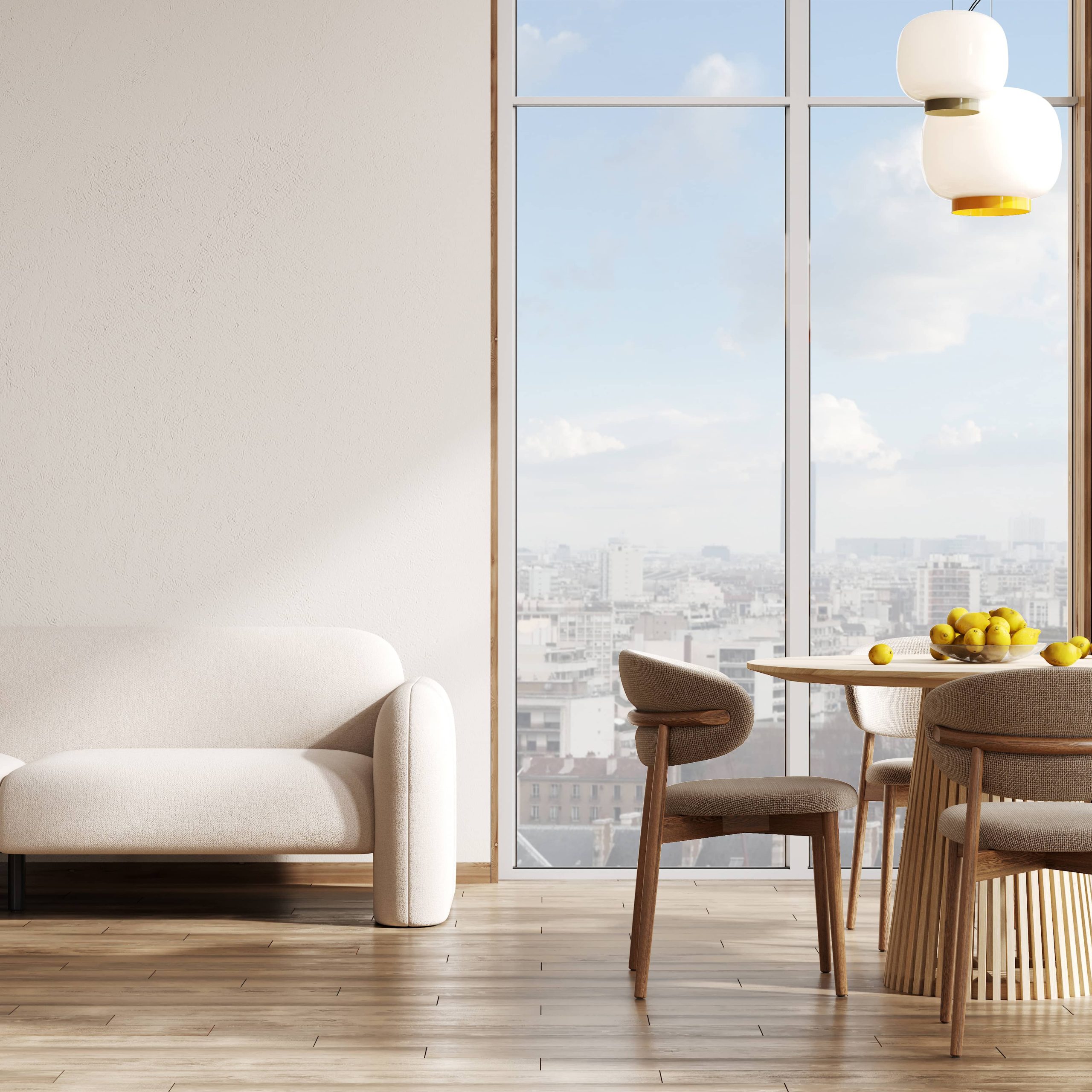
In a world that often feels cluttered and chaotic, the allure of minimalist interior design is undeniable. This design philosophy, rooted in simplicity and functionality, offers a serene escape from the overwhelming stimuli of modern life. Minimalism is not just about reducing clutter; it’s about creating spaces that are both beautiful and functional, where every element serves a purpose. Let’s explore the essentials of minimalist interior design and how you can incorporate them into your home.
1. Simplicity is Key
At the heart of minimalist design is simplicity. This doesn’t mean your space has to be stark or devoid of personality. Instead, focus on clean lines, uncluttered spaces, and a restrained color palette. The idea is to create a calm and inviting environment that feels open and airy. Start by decluttering your space, keeping only the items that are essential or bring you joy. This will help you achieve a sense of order and tranquility.
2. Functionality and Purpose
Every piece of furniture and decor in a minimalist home should have a purpose. This is not the place for ornate or overly decorative items. Instead, choose pieces that are functional and serve a dual purpose. For example, a sleek coffee table with built-in storage can help keep your living room tidy while providing a surface for drinks and books. When selecting furniture, consider its functionality and how it contributes to the overall harmony of the space.
3. Neutral Color Palette
A neutral color palette is a hallmark of minimalist design. Whites, grays, and beiges create a soothing backdrop that allows the architecture and furnishings to shine. These colors also help to make a space feel larger and more open. However, this doesn’t mean your home has to be devoid of color. You can add interest and warmth with natural materials like wood and stone, or by incorporating subtle pops of color through artwork or textiles.
4. Quality Over Quantity
In minimalist design, less is more. Instead of filling your home with numerous items, invest in a few high-quality pieces that you truly love. This could be a well-crafted sofa, a beautiful piece of art, or a unique light fixture. Quality pieces not only last longer but also add a sense of luxury and sophistication to your space. Remember, the goal is to create a curated environment that reflects your personal style.
5. Embrace Open Spaces
Minimalist design often features open floor plans that allow for a seamless flow between rooms. This creates a sense of continuity and makes a space feel larger. To achieve this, consider removing unnecessary walls or barriers and using furniture to define different areas. For example, a low-profile sofa can separate the living room from the dining area without obstructing the view. Open spaces also allow for more natural light, which is a key element in minimalist design.
6. Incorporate Natural Elements
Bringing nature indoors is an important aspect of minimalist design. Natural materials like wood, stone, and leather add warmth and texture to a space, making it feel more inviting. Plants are another great way to incorporate nature into your home. They not only purify the air but also add a touch of greenery that can brighten up any room. Choose low-maintenance plants like succulents or snake plants that thrive in a minimalist environment.
7. Focus on Light and Space
Lighting plays a crucial role in minimalist design. Natural light is preferred, so keep window treatments minimal to allow as much light in as possible. When artificial lighting is necessary, opt for simple fixtures that complement the overall design. Recessed lighting, floor lamps, and pendant lights are all great options. Mirrors can also be used strategically to reflect light and create the illusion of more space.
8. Personal Touches
While minimalist design is all about simplicity, it’s important to add personal touches that make your space feel like home. This could be a collection of your favorite books, a few family photos, or a piece of art that holds special meaning. The key is to keep these items to a minimum and ensure they complement the overall aesthetic. Personal touches add character and warmth to a minimalist space without overwhelming it.
Conclusion
Minimalist interior design is more than just a trend; it’s a lifestyle choice that promotes simplicity, functionality, and mindfulness. By focusing on the essentials and eliminating the unnecessary, you can create a home that is both beautiful and serene. Whether you’re starting from scratch or looking to simplify your current space, the principles of minimalist design can help you achieve a more peaceful and intentional living environment. Embrace the beauty of simplicity and discover the transformative power of minimalist interior design.

